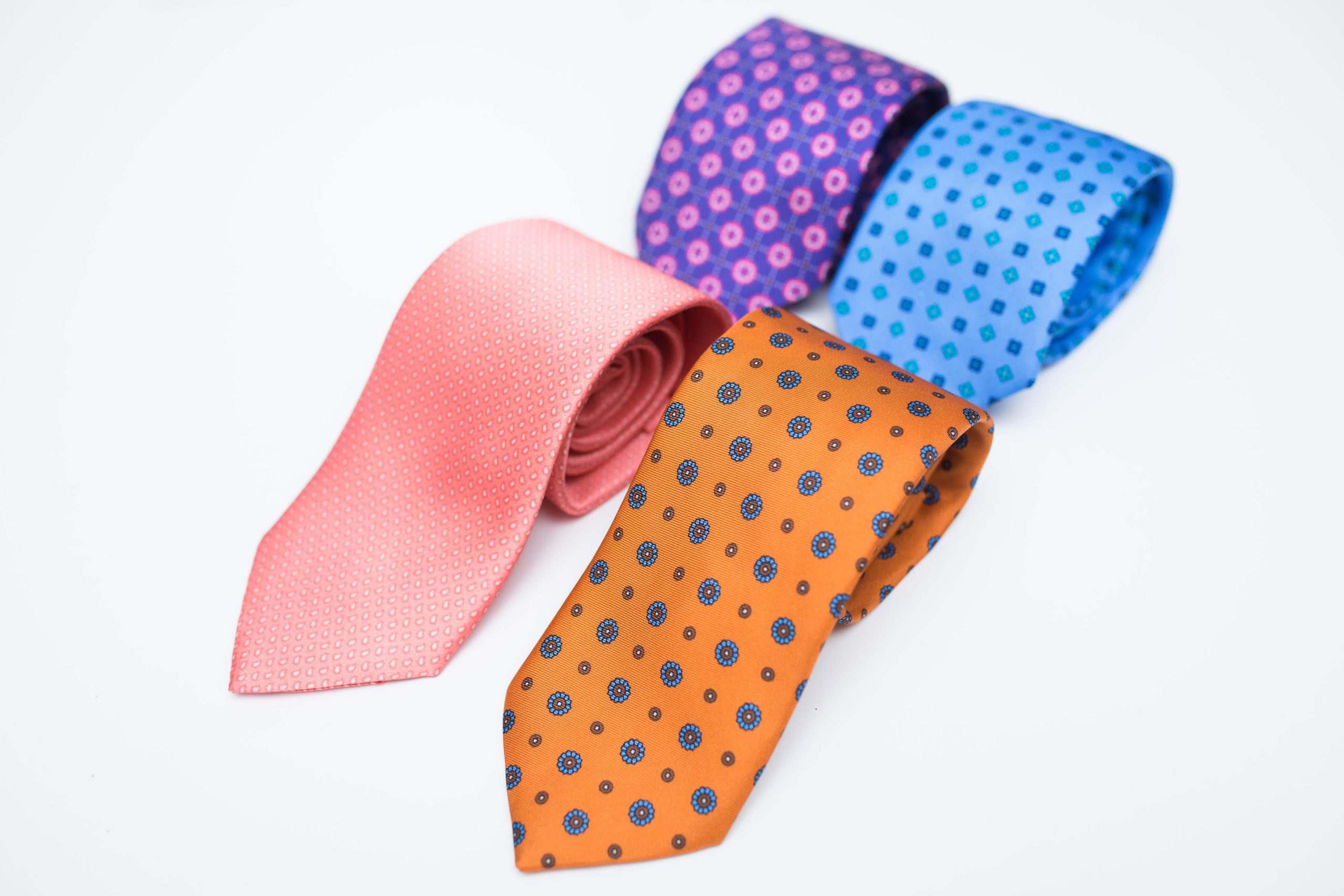Get the job.
Close the deal.
Get the girl.
What do these three things have in common? The right image.
We all know that first impressions can be influenced by what you wear. Whether conscious or not, people make grandiose assumptions based upon your everyday appearance.
A tie is one of the most influential tools at your disposal. That’s why you always reach for your lucky tie when you are about to close a deal or why the girl at happy hour playfully touches your tie to show she’s interested. Your tie makes a powerful statement and its important to know what image you are projecting.
Red
It’s called the power tie for a reason, and by wearing a red tie you are implying that you mean business. Just like Tiger Woods wears a red shirt to convey dominance, the red tie is a reaffirmation of strength, authority and dominance within the professional world. For a less aggressive approach, switch out your vibrant red for a softer shade of burgundy.
Yellow/Gold
Yellow is the approachable cousin of the power tie. While still conveying authority, intelligence and positivity, yellow is the subtle version of a red power tie. This is the perfect tie to wear for a first interview, because it shows you are confident and not afraid of a challenge.
Blue
Conveying trust, stability and confidence a blue tie is perfect for client facing or public speaking. That being said, it’s no coincidence that politicians and salesmen are frequently seen in blue ties. The lighter blue shade is softer and appears more approachable. A darker shade of blue represents seriousness and matter-of-factness.
Green
This color symbolizes practicality, reliability and implies being down-to-earth. Brighter shades of green will imply that you are balanced, fresh and energetic. For a conventional look, darker shades of green are more appropriate and will imply that you are stable and serious.
Orange
Orange is the wild card of tie colors. A bright orange tie will imply that you are enthusiastic, open-minded and adventurous. It is the perfect tie for making a memorable first impression and creating a sense of excitement within the workplace.



 As we settle upon the last few weeks of winter and await the warmer months of spring, we will undoubtedly combat snow, rain, slush and everything in between. The real challenge comes when you’re forced to try and protect your wardrobe from mother nature’s wrath. Listed below are a few items that will help safeguard your wardrobe from head to toe.
As we settle upon the last few weeks of winter and await the warmer months of spring, we will undoubtedly combat snow, rain, slush and everything in between. The real challenge comes when you’re forced to try and protect your wardrobe from mother nature’s wrath. Listed below are a few items that will help safeguard your wardrobe from head to toe.





